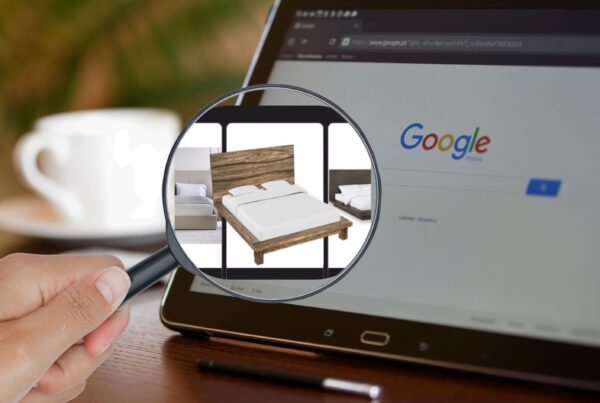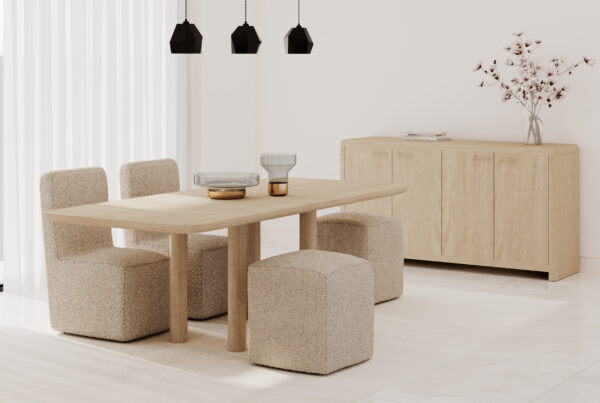How to use AR marketing for your own online shop
When it comes to pushing sales figures and offering customers a unique and highly useful shopping experience, more and more e-commerce companies are turning to web augmented reality marketing. Not only does WebAR offer significant added value for customers online, it also guarantees differentiation and standing out from other conventional online shops. However, even if some providers are already making use of the technology, it is not uncommon to see the first mistake in marketing: many customers are not even aware that the possibility of visualisation in AR exists on the website when they are browsing on the desktop. The insight only comes later when the smartphone accidentally calls up the website, where the display of the application first becomes visible – often too late when another purchase decision has already been made. This is just one aspect of AR marketing that should not be neglected, because the virtual product presentation will not bring any results if the customers are not aware of the possibilities. In this article, we want to show you how to get the most out of WebAR for your own webshop and what steps are necessary to achieve this.
Step 1: Start with the basics
In order to be able to use WebAR at all, a little technical groundwork has to be done first. At Mazing, we attach particular importance to minimising the effort for online shop providers. Once the 3D model and the associated 3D and AR viewer have been created by us, the whole thing can now be integrated into the website within a few minutes using an HTML iframe. Our free iFrame generator can be used to simplify the process. Alternatively, you can also link to the 3D and AR view via a direct link. The forwarding can be done by clicking on a button in the form of images or text.
We recommend integrating the 3D/AR Viewer on the main and/or product page. The advantage of advertising on the main page is the immediate attention of the customer or prospective customer as soon as the website is called up. Once the customer has clicked on the product page, it is easier for them to make a purchase, as the WebAR product presentation not only attracts attention, but also gives an improved impression of the product and guarantees more certainty when making a purchase decision.
Once integrated into the website, the public must now be made aware of this. Augmented reality still needs to be explained, so it is important to inform customers about how the product display works in the AR Viewer and that this is very simple and intuitive. There are various ways to advertise the new feature in the online shop: The simplest is probably to send a newsletter to regular customers, in which the viewer is best represented by a GIF. Initially, e-mail is a good opportunity for communication, as the resources are already available. In addition to this, we also recommend writing a press release to publicise the change to a wider audience. Another option, which is particularly relevant for publications in print media or for distribution at trade fairs, is the display of a QR code. This can be scanned by any smartphone, which takes you directly to the WebAR display.
Step 2: Sales advice
It is important for every company to advise its customers competently and simply. Augmented reality marketing offers itself as a supporting tool for successfully realising precisely this. The WebAR visualisation should be referred to when advising customers both online and on site. When buying online, care should be taken to design the main or product page in such a way that it is immediately clear to the customer how to access the viewer. Since the placement itself takes place on a smartphone device or tablet, it is important to add a button on the desktop version of the website that contains a QR code for access. This is always included in the delivery of the viewer from Mazing. WebAR should also be explicitly pointed out again when customers call.
Digital product placement can be used just as well when visiting a showroom. In stationary retail, it is possible to distribute flyers with printed QR codes for the individual products to customers. This allows the customer to test the product again virtually in their own home after the consultation in the showroom.
Step 3: Sales boost with social media
Filters are used every day by millions of users on a wide variety of social media. We are also happy to help you create an Instagram filter for your products. A filter allows companies to go viral more quickly, for example by posting a story with the product filter. Users can simply click on the filter and then try it out for themselves and share it again. This is a quick way to achieve organic reach.
Another and for some companies more effective way to advertise their own products through AR on social media is to network with influencers who already have a large reach. Instead of sending expensive test products and paying bloggers for advertising, it is better to send them virtual products in the form of AR, which they can then include in posts. We are also happy to support you in the search and preparation of an influencer augmented reality marketing campaign.
Step 4: Analytics
Data is the new gold when it comes to measuring the success of your own marketing strategy. On the Mazing platform, you can track live analytics, which provide information on how engagement with the AR display on the website is developing. This includes measurements of the number of 3D view views, how often the AR view was opened and a product was placed and how many QR code scans took place on the page. It is always important to ensure that data on the 3D and AR view is compared proportionally and that changes to the conversion rate are identified.
We are always available for a free AR marketing consultation, simply book here.





